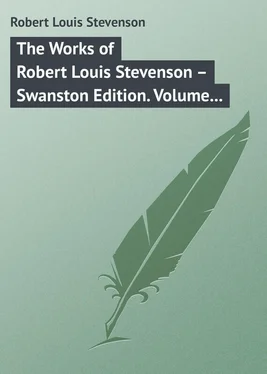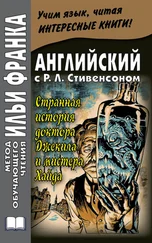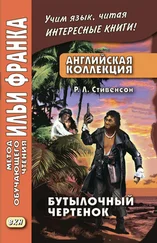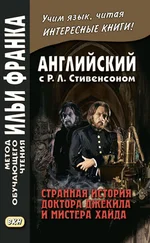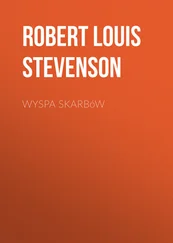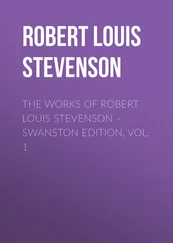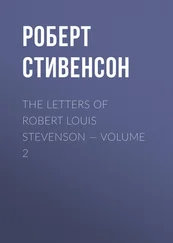Robert Stevenson - The Works of Robert Louis Stevenson – Swanston Edition. Volume 16
Здесь есть возможность читать онлайн «Robert Stevenson - The Works of Robert Louis Stevenson – Swanston Edition. Volume 16» — ознакомительный отрывок электронной книги совершенно бесплатно, а после прочтения отрывка купить полную версию. В некоторых случаях можно слушать аудио, скачать через торрент в формате fb2 и присутствует краткое содержание. ISBN: , Жанр: foreign_prose, на английском языке. Описание произведения, (предисловие) а так же отзывы посетителей доступны на портале библиотеки ЛибКат.
- Название:The Works of Robert Louis Stevenson – Swanston Edition. Volume 16
- Автор:
- Жанр:
- Год:неизвестен
- ISBN:http://www.gutenberg.org/ebooks/30990
- Рейтинг книги:4 / 5. Голосов: 1
-
Избранное:Добавить в избранное
- Отзывы:
-
Ваша оценка:
- 80
- 1
- 2
- 3
- 4
- 5
The Works of Robert Louis Stevenson – Swanston Edition. Volume 16: краткое содержание, описание и аннотация
Предлагаем к чтению аннотацию, описание, краткое содержание или предисловие (зависит от того, что написал сам автор книги «The Works of Robert Louis Stevenson – Swanston Edition. Volume 16»). Если вы не нашли необходимую информацию о книге — напишите в комментариях, мы постараемся отыскать её.
The Works of Robert Louis Stevenson – Swanston Edition. Volume 16 — читать онлайн ознакомительный отрывок
Ниже представлен текст книги, разбитый по страницам. Система сохранения места последней прочитанной страницы, позволяет с удобством читать онлайн бесплатно книгу «The Works of Robert Louis Stevenson – Swanston Edition. Volume 16», без необходимости каждый раз заново искать на чём Вы остановились. Поставьте закладку, и сможете в любой момент перейти на страницу, на которой закончили чтение.
Интервал:
Закладка:
Robert Louis Stevenson
The Works of Robert Louis Stevenson – Swanston Edition, Vol. 16
RECORDS OF A FAMILY OF ENGINEERS
INTRODUCTION
THE SURNAME OF STEVENSON
From the thirteenth century onwards, the name, under the various disguises of Stevinstoun, Stevensoun, Stevensonne, Stenesone, and Stewinsoune, spread across Scotland from the mouth of the Firth of Forth to the mouth of the Firth of Clyde. Four times at least it occurs as a place-name. There is a parish of Stevenston in Cunningham; a second place of the name in the Barony of Bothwell in Lanark; a third on Lyne, above Drochil Castle; the fourth on the Tyne, near Traprain Law. Stevenson of Stevenson (co. Lanark) swore fealty to Edward I. in 1296, and the last of that family died after the Restoration. Stevensons of Hirdmanshiels, in Midlothian, rode in the Bishops’ Raid of Aberlady, served as jurors, stood bail for neighbours – Hunter of Polwood, for instance – and became extinct about the same period, or possibly earlier. A Stevenson of Luthrie and another of Pitroddie make their bows, give their names, and vanish. And by the year 1700 it does not appear that any acre of Scots land was vested in any Stevenson. 1 1 An error: Stevensons owned at this date the barony of Dolphingston in Haddingtonshire, Montgrennan in Ayrshire, and several other lesser places.
Here is, so far, a melancholy picture of backward progress, and a family posting towards extinction. But the law (however administered, and I am bound to aver that, in Scotland “it couldna weel be waur”) acts as a kind of dredge, and with dispassionate impartiality brings up into the light of day, and shows us for a moment, in the jury-box or on the gallows, the creeping things of the past. By these broken glimpses we are able to trace the existence of many other and more inglorious Stevensons, picking a private way through the brawl that makes Scots history. They were members of Parliament for Peebles, Stirling, Pittenweem, Kilrenny, and Inverurie. We find them burgesses of Edinburgh; indwellers in Biggar, Perth, and Dalkeith. Thomas was the forester of Newbattle Park, Gavin was a baker, John a maltman, Francis a chirurgeon, and “Schir William” a priest. In the feuds of Humes and Heatleys, Cunninghams, Montgomeries, Mures, Ogilvies, and Turnbulls, we find them inconspicuously involved, and apparently getting rather better than they gave. Schir William (reverend gentleman) was cruellie slaughtered on the Links of Kincraig in 1532; James (”in the mill-town of Roberton”), murdered in 1590; Archibald (“in Gallowfarren”), killed with shots of pistols and hagbuts in 1608. Three violent deaths in about seventy years, against which we can only put the case of Thomas, servant to Hume of Cowden Knowes, who was arraigned with his two young masters for the death of the Bastard of Mellerstanes in 1569. John (“in Dalkeith”) stood sentry without Holyrood while the banded lords were despatching Rizzio within. William, at the ringing of Perth bell, ran before Cowrie House “with ane sword, and, entering to the yearde, saw George Craiggingilt with ane twa-handit sword and utheris nychtbouris; at quilk time James Boig cryit ower ane wynds, ‘Awa hame! ye will all be hangit’” – a piece of advice which William took, and immediately “depairtit.” John got a maid with child to him in Biggar, and seemingly deserted her; she was hanged on the Castle Hill for infanticide, June 1614; and Martin, elder in Dalkeith, eternally disgraced the name by signing witness in a witch trial, 1661. These are two of our black sheep. 2 2 Pitcairn’s “Criminal Trials,” at large. – [R. L. S.]
Under the Restoration, one Stevenson was a bailie in Edinburgh, and another the lessee of the Canonmills. There were at the same period two physicians of the name in Edinburgh, one of whom, Dr. Archibald, appears to have been a famous man in his day and generation. The Court had continual need of him; it was he who reported, for instance, on the state of Rumbold; and he was for some time in the enjoyment of a pension of a thousand pounds Scots (about eighty pounds sterling) at a time when five hundred pounds is described as “an opulent future.” I do not know if I should be glad or sorry that he failed to keep favour; but on 6th January 1682 (rather a cheerless New Year’s present) his pension was expunged. 3 3 Fountainhall’s “Decisions,” vol. i. pp. 56, 132, 186, 204, 368. – [R. L. S.]
There need be no doubt, at least, of my exultation at the fact that he was knighted and recorded arms. Not quite so genteel, but still in public life, Hugh was Under-Clerk to the Privy Council, and liked being so extremely. I gather this from his conduct in September 1681, when, with all the lords and their servants, he took the woful and soul-destroying Test, swearing it “word by word upon his knees.” And, behold! it was in vain, for Hugh was turned out of his small post in 1684. 4 4 Ibid. pp. 158, 299. – [R. L. S.]
Sir Archibald and Hugh were both plainly inclined to be trimmers; but there was one witness of the name of Stevenson who held high the banner of the Covenant – John, “Land-Labourer, 5 5 Working farmer: Fr. laboureur .
in the parish of Daily, in Carrick,” that “eminently pious man.” He seems to have been a poor sickly soul, and shows himself disabled with scrofula, and prostrate and groaning aloud with fever; but the enthusiasm of the martyr burned high within him.
“I was made to take joyfully the spoiling of my goods, and with pleasure for His name’s sake wandered in deserts and in mountains, in dens and caves of the earth. I lay four months in the coldest season of the year in a haystack in my father’s garden, and a whole February in the open fields not far from Camragen, and this I did without the least prejudice from the night air; one night, when lying in the fields near to the Carrick-Miln, I was all covered with snow in the morning. Many nights have I lain with pleasure in the churchyard of Old Daily, and made a grave my pillow; frequently have I resorted to the old walls about the glen, near to Camragen, and there sweetly rested.” The visible hand of God protected and directed him. Dragoons were turned aside from the bramble-bush where he lay hidden. Miracles were performed for his behoof. “I got a horse and a woman to carry the child, and came to the same mountain, where I wandered by the mist before; it is commonly known by the name of Kellsrhins: when we came to go up the mountain, there came on a great rain, which we thought was the occasion of the child’s weeping, and she wept so bitterly, that all we could do could not divert her from it, so that she was ready to burst. When we got to the top of the mountain, where the Lord had been formerly kind to my soul in prayer, I looked round me for a stone, and espying one, I went and brought it. When the woman with me saw me set down the stone, she smiled, and asked what I was going to do with it. I told her I was going to set it up as my Ebenezer, because hitherto, and in that place, the Lord had formerly helped, and I hoped would yet help. The rain still continuing, the child weeping bitterly, I went to prayer, and no sooner did I cry to God, but the child gave over weeping, and when we got up from prayer, the rain was pouring down on every side, but in the way where we were to go there fell not one drop; the place not rained on was as big as an ordinary avenue.” And so great a saint was the natural butt of Satan’s persecutions. “I retired to the fields for secret prayer about midnight. When I went to pray I was much straitened, and could not get one request, but ‘Lord pity,’ ‘Lord help’; this I came over frequently; at length the terror of Satan fell on me in a high degree, and all I could say even then was – ‘Lord help.’ I continued in the duty for some time, notwithstanding of this terror. At length I got up to my feet, and the terror still increased; then the enemy took me by the arm-pits, and seemed to lift me up by my arms. I saw a loch just before me, and I concluded he designed to throw me there by force; and had he got leave to do so, it might have brought a great reproach upon religion.” 6 6 This John Stevenson was not the only “witness” of the name; other Stevensons were actually killed during the persecutions, in the Glen of Trool, on Pentland, etc.; and it is very possible that the author’s own ancestor was one of the mounted party embodied by Muir of Caldwell, only a day too late for Pentland.
But it was otherwise ordered, and the cause of piety escaped that danger. 7 7 Wodrow Society’s “Select Biographies,” vol. ii. – [R. L. S.]
Интервал:
Закладка:
Похожие книги на «The Works of Robert Louis Stevenson – Swanston Edition. Volume 16»
Представляем Вашему вниманию похожие книги на «The Works of Robert Louis Stevenson – Swanston Edition. Volume 16» списком для выбора. Мы отобрали схожую по названию и смыслу литературу в надежде предоставить читателям больше вариантов отыскать новые, интересные, ещё непрочитанные произведения.
Обсуждение, отзывы о книге «The Works of Robert Louis Stevenson – Swanston Edition. Volume 16» и просто собственные мнения читателей. Оставьте ваши комментарии, напишите, что Вы думаете о произведении, его смысле или главных героях. Укажите что конкретно понравилось, а что нет, и почему Вы так считаете.
